Welcome to the Stone Pavilion
Explore ancient worlds. Feel the crystal vibe. Learn UConn history.
Architectural Gem
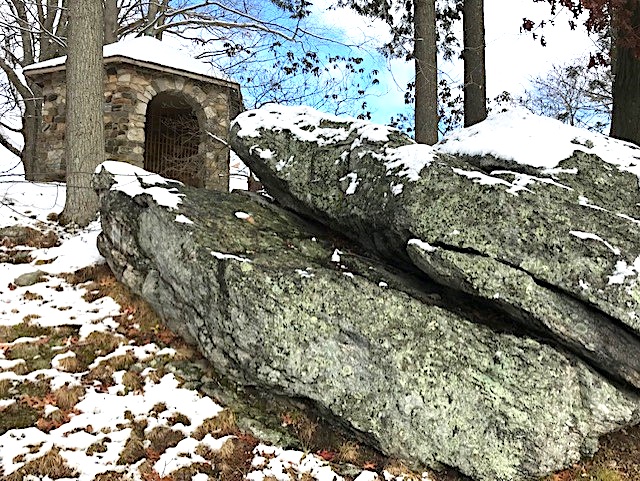
Hiding in Plain Sight
The stone pavilion is a tiny, hexagonal building on the main campus of the University of Connecticut that is shaped like a quartz crystal, built of stones from every Connecticut town, and exhibits specimen stones from every U.S. state. Because its oral history was largely lost in the wake of the 1938 Hurricane, and because there's no official name, sign, map label, or reference document, it's been a mystery hiding in plain sight for nearly a century.

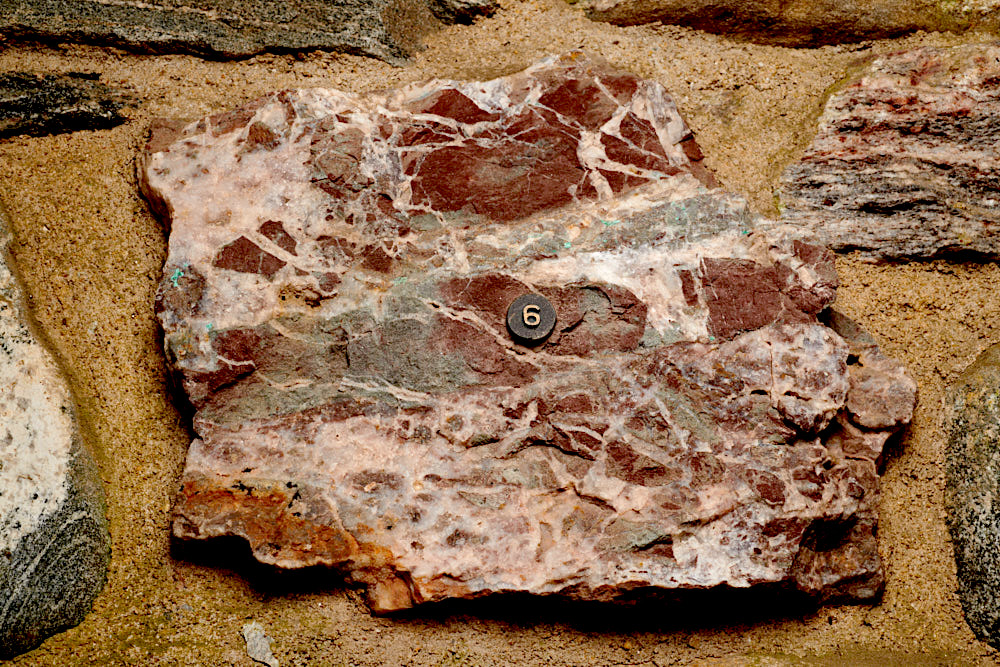
Project Purpose
The Stone Pavilion Project aims to enhance the visibility, enjoyment, and educational utility of this unique and iconic structure. Though it's been available for public viewing since 1937, and though it's been on the National Register of Historic Places since 1989, the cultural significance of the building has been largely forgotten, and the educational significance of its stone collections have-never been made publicly available. By providing this information, we are re-dedicating an important memorial to UConn history and are re-purposing an overlooked curiosity into an open-air exhibit of our natural history museum. Fun activities, virtual tours, story maps, print brochures, video games, and educational resources are all in the works.
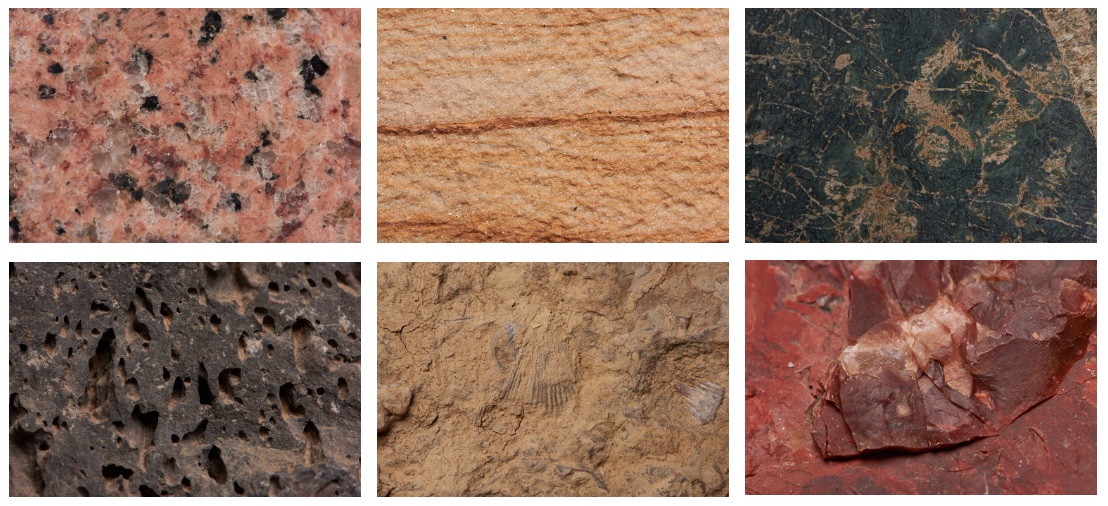
Invitation
The Department of Earth Sciences invites you to walk through one of the pavilion's gateway arches for a spontaneous visit, or one planned through student activities, course assignments, and campus tours. This website can be your guide. Socially, the building is affirms the gift of an individual for the public good. Politically, it commemorates those who believed that the dream of a national university in Storrs was possible. Artistically, its stones are beautiful works of natural art. Environmentally, it reveals tangible evidence of climate change, extinct ecosystems, and natural resources. We invite your ideas and collaborations to help enhance public use of this hidden treasure.
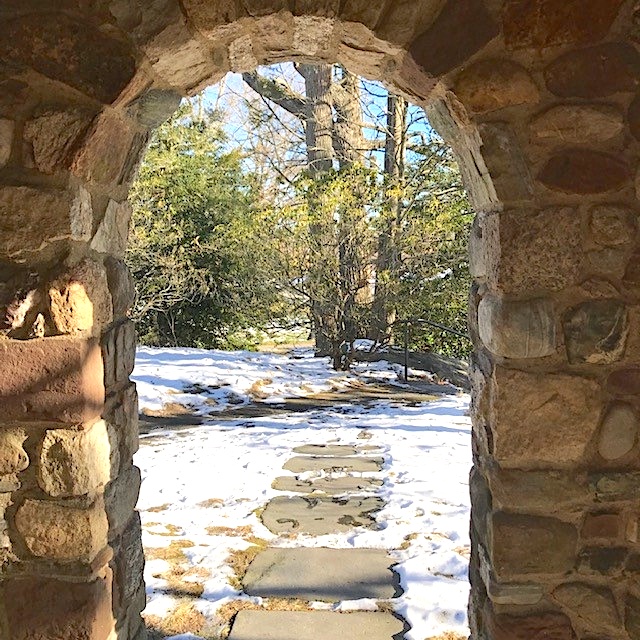
Ancient Worlds
In the pavilion are clues to: sand dunes larger than those of today's Sahara Desert; lava lakes massive enough to fill Long Island Sound; glacial ice powerful enough to excavate the Great Lakes and mantle New England with broken stones; coral reefs built by tropical marine animals before Earth's first mass extinction; sandy beaches shoaling over a coastal plain much larger than those of today; and much more. Click here to learn more about unlocking the doors to those Ancient Worlds.
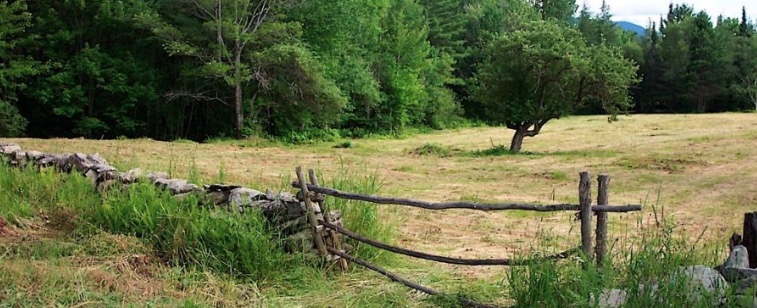
Collaborations
The Stone Pavilion project was launched in summer 2021 by geologist Robert M. Thorson of UConn's Department of Earth Sciences and photographer Peter Morenus of UConn Communications. Their original goal -- document the exhibit wall of specimen stones,-- overlapped with those of UConn's Stone Wall Initiative within the Connecticut State Museum of Natural History. We reached out to various administrative offices and departments internal to UConn, and more broadly with town, state, and national organizations. Former state geologist Margaret Thomas of the Connecticut Geological and Natural History Survey (CGNHS) helped us contact all 50 U.S. state geological surveys for assistance in identifying the specimens. Within the Department of Earth Sciences, Clay Tabor co-designed this website and Ben Chilson-Parks helped identify the specimens. Additional collaborations are underway. Learn more about our future plans by linking to Collaborations.
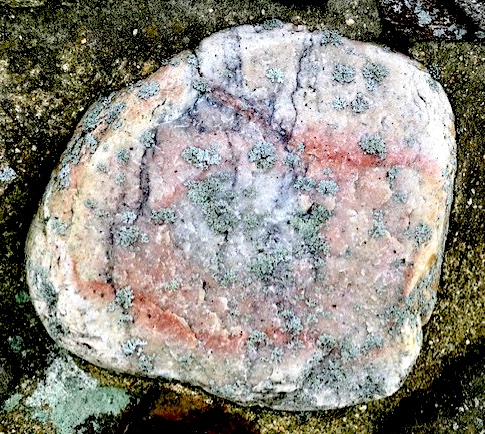
Land Acknowledgment
The land on which the pavilion stands is the territory of the Mohegan and Nipmuc Peoples, who have stewarded this land throughout the generations. We thank them for their strength and resilience in protecting this land, and aspire to uphold our responsibilities according to their example.
Contact
- Robert M. Thorson, Professor of Earth Sciences, College of Liberal Arts and Sciences, University of Connecticut.
- Email: robert.thorson@uconn.edu
- Phone: Arrange by Email.
- Hard-copy Mail: Department of Earth Sciences, Unit 1045, University of Connecticut, Storrs, CT 06269-1045.
- Office: 227 Beach Hall, University of Connecticut Storrs.
Finding the Pavilion
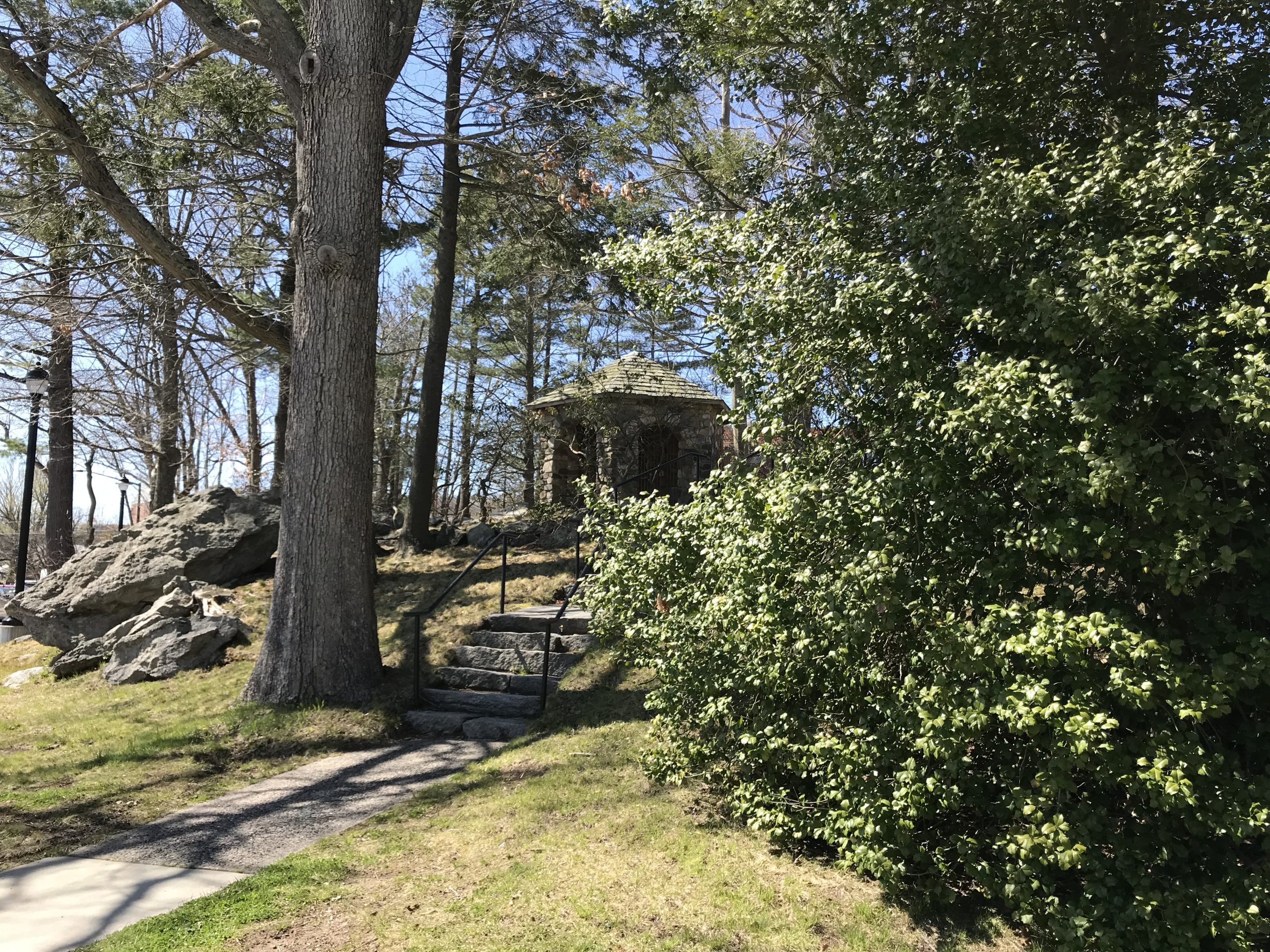
Location - The Blue Dot
The Stone Pavilion overlooks North Eagleville Road at a point immediately west of the Storrs Congregational Church. Its GSP coordinates are 48.8116 North, 72.2516 West. As of January 1, 2025, the pavilion remains missing from Google Maps except for a photo link.
On UConn's most recent official map, show below, the pavilion is a tiny, blue, unlabeled, dot just above the word "Road." Based on size and shape, it's UConn's smallest building and its only hexagon. All other buildings have labels, including the small planetarium.
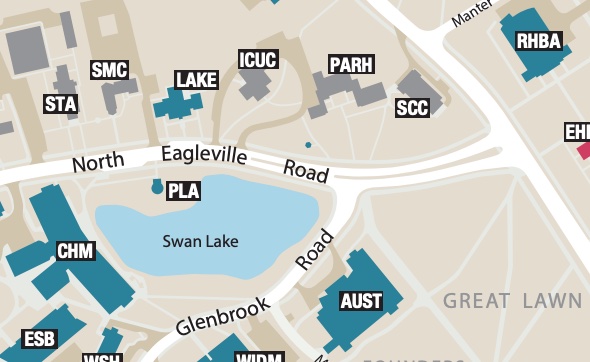
Street View
On Google Earth Street View, the pavilion is barely visible, even when the trees are bare of leaves.

Access and Parking
Pedestrian access is via a stairway built of quarried stone that begins directly above a well-marked crosswalk at the eastern end of Swan Lake about 500 feet west of the stoplights at Highway 195. Those with limited mobility can access the site from the rear via a paved parking lot behind the Church. The site is not accessible by wheelchair. Correcting this is one of our highest priorities. The best guaranteed parking is in the North Garage.
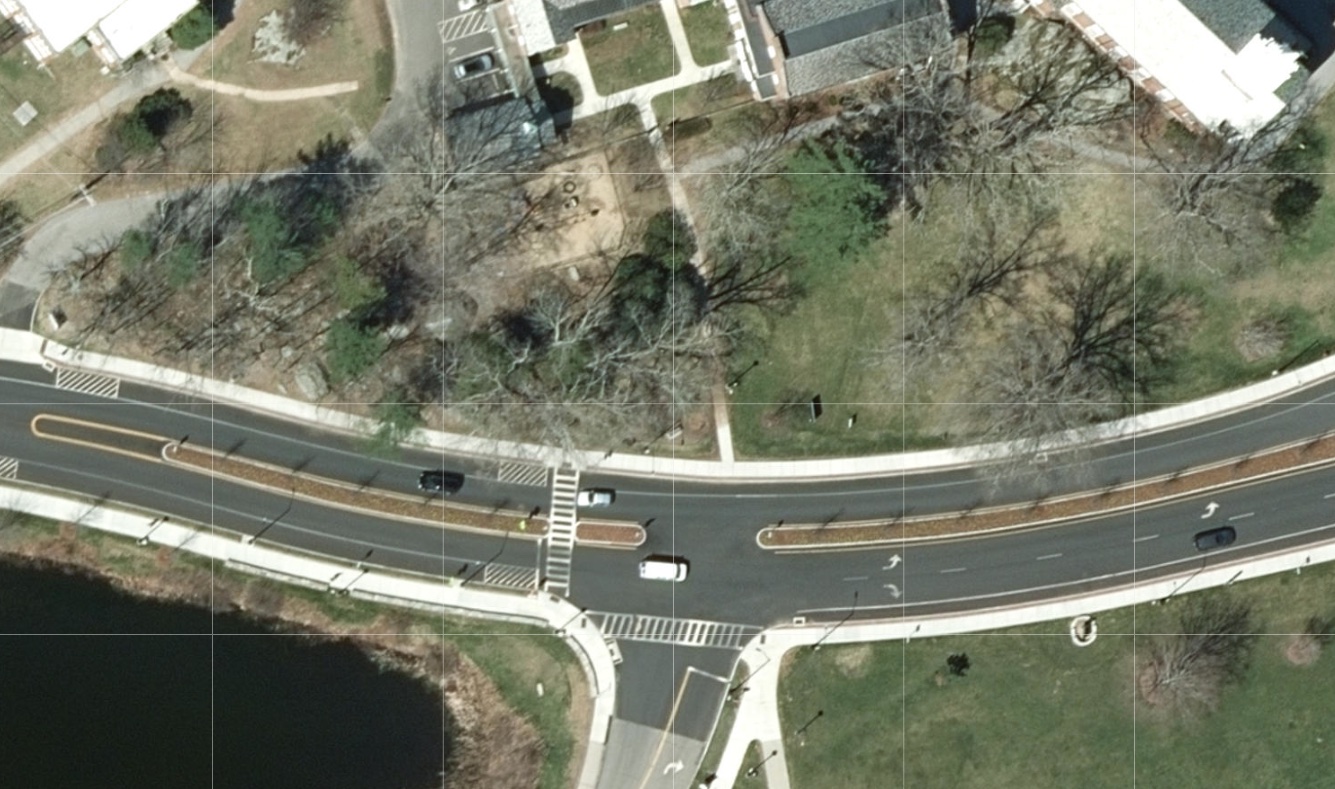
History & Significance
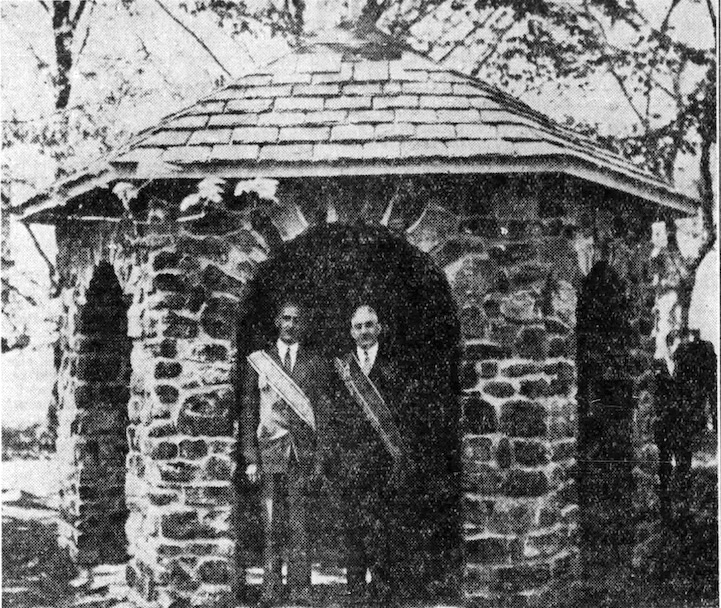
Gift to the Future
UConn's Stone Pavilion was built in 1937 with stones gifted to what was then Connecticut State College from the Connecticut State Grange. The total invoiced cost of its construction was $750. Dedicated to "America's youth," this "Tribute to Agriculture" memorialized the historic, political, and economic ties between agriculture and education at the local, state, and national level. Without the support of the state chapter of the nation's most powerful agricultural organization, tiny Storrs Agricultural School could not have grown, in steps, into a state agricultural college, a U.S. land-grant institution, a state college, a national university. UConn has since become an international university.
Dedication Ceremony
On Sunday, May 17, 1937, residents across the state opened their morning newspaper, the Hartford Courant, to read a front-page story about a festive dedication ceremony for the small hexagonal building. To read that story, link to these digital scans of Courant Front Page 1 and Courant Front Page 2 for May 17, 1937. The other stories and advertisements published that day provide a time capsule of contemporary culture for that moment.
It was a major "block" party! Up to 3,000 students, politicians, residents, and grangers gathered for a picnic on UConn's lawns as part of the Ninth Annual Grange Sunday. Background music was provided by a concert band and carillon concert from the church bells. Attendees witnessed college president Albert Jorgensen accept the pavilion as a gift from Master of the National Grange, Louis Taber, of Columbus, Ohio. Pending future verification, construction had been supervised by Freidrich (Fritz) Steinmeyer, a Storrs resident, farmer, stonemason, and employee of what was then Connecticut State College. Learn more by linking to Dedication Ceremony.
UConn's most Pivotal Year in its most Pivotal Decade
UConn's story as an institution began in 1880 with a gift of land by Charles and Augustus Storrs to found the Storrs Agricultural School. It opened the following year with 13 male students. The fertile glacial soils of their farm had supported the Storrs family since 1698, when Samuel Storrs pioneered what had been Indigenous territory. It's quite likely that at least one of the stones turned up by Storrs family farm activities ended up in the stones used to build the pavilion walls. Learn more about UConn's back-story.
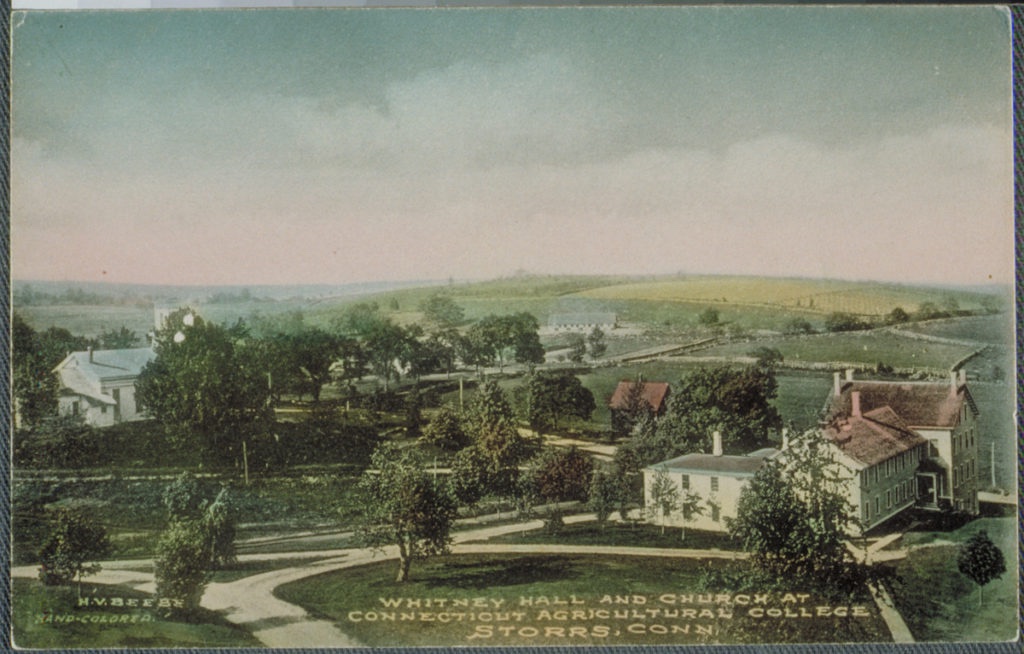
The gathering of the stones, their assembly into a building, and the celebration of this powerful symbol, was very likely, part of a larger unofficial cultural movement responding to the WPA Federal Writer's Project, the American Guide Series. Quoting William Stott's Documentary Expression and Thirties America (p. 111) "produced 378 books and pamphlets. The series represents, Lewis Mumford said, 'the first attempt, on a comprehensive scale, to make the country itself worthily known to Americans.' The state guides, the heart of the series, follow a set pattern. Each survey a state's history, geology, climate, racial makeup, industries, folklore, social life, arts, crafts, and culture, to begin with....Each WPA project documenting America became, as Grace Overmyer said in 1939, "a sort of road map for the cultural rediscovery of America from within." (ibid, 110)"
The stonework of gathering, building, and dedicating also spanned the most pivotal decade of UConn history. In the early 1930s, a farmer named Albert P. Marsh of New Britain began gathering the specimen stones during national road trips. In 1933, what had been Connecticut Agricultural College became Connecticut State College. In 1934, Marsh generously donated his collection of stones to the grange to construct a memorial. In early 1937 the Grange built and gifted the pavilion during what was arguably the most momentous year of UConn history.
In January that year, only four months before the ceremony Albert Jorgensen, president of what was then Connecticut State College, proposed a three-year, three-million-dollar building program that, in cost, exceeded the sum total spent during the institution's history. In his vision, a dirt-road college would become paved road university with nearly five miles of roads and walkways. Deals were being signed for new buildings and athletic facilities, including the campus's signature building Wilbur Cross Library, a new power plant with steam lines, and concrete sidewalks to replace muddy paths. Without this vision, a bill introduced later that year into the state General Assembly might have created entirely separate university elsewhere in the state. Quoting Bruce Stave's official history: "Representative Edward D. Seger of Colchester introduced a bill in the General Assembly to establish a university in the state of Connecticut....With an appropriation of five million dollars, it would have established an entirely new institution of land, buildings, and staff" somewhere else, and to be called Connecticut State University. Though tabled in the 1937 session, the bill was reintroduced in 1939 with the location designated as Storrs, "passing both houses without dissent." The name "University of Connecticut" was adopted during the committee hearings.
The decision by the state to build its public flagship university in Storrs would not have happened without our institution's close connections to agriculture (now environment). President Jorgensen.
When the pavilion exhibit was unveiled in 1937, Connecticut State College was a low-key state school that had just installed its first traffic light and held its first summer sessions. Today there are dozens of traffic lights, and many dozens of summer courses during three summer sessions. Back then, total college enrollment was 908 students, with twice as many men as women. By 2024, UConn would enroll 32,332 students, with more women than men, a 36-fold increase..
In both place and time, the public gifting of the Stone Pavilion from the Connecticut State Grange to what was then Connecticut State College on May 16, 1937, symbolizes the birth of the modern university powerfully than any other UConn building, monument, or structure. President Jorgensen, a former Danish immigrant farmer from the Midwest, graciously accepted the gift from Louis J. Tabor, Master of the National Grange. Within two years, on July 1, 1939, UConn became the institution it is today.
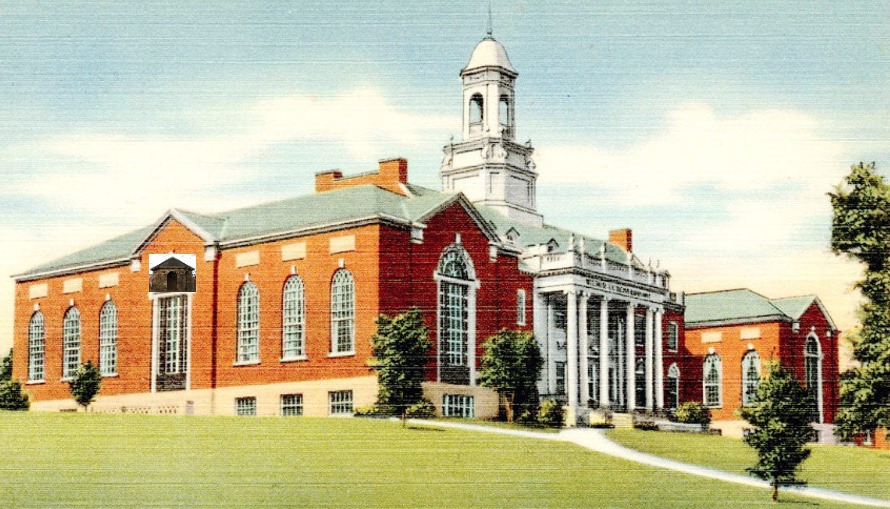
Moving on to Other Things
By the fall of 1937, the dedication party for the pavilion had become history. September 1938 saw New England's most destructive hurricane drew public attention toward disaster recovery. In 1939 the opening of the Wilbur Cross Library, and the broadened mission of the new university drew attention away from agriculture. As the Great Depression ended, the agricultural sector of the New England Economy fell on hard times. The proliferation of automobiles and rising personal incomes was shifting New England culture away from rural life toward urbanization, industrialization, tourism, and greater regional mobility. As farms went bankrupt and reverted to forest, the strength and membership of the Grange declined precipitously.
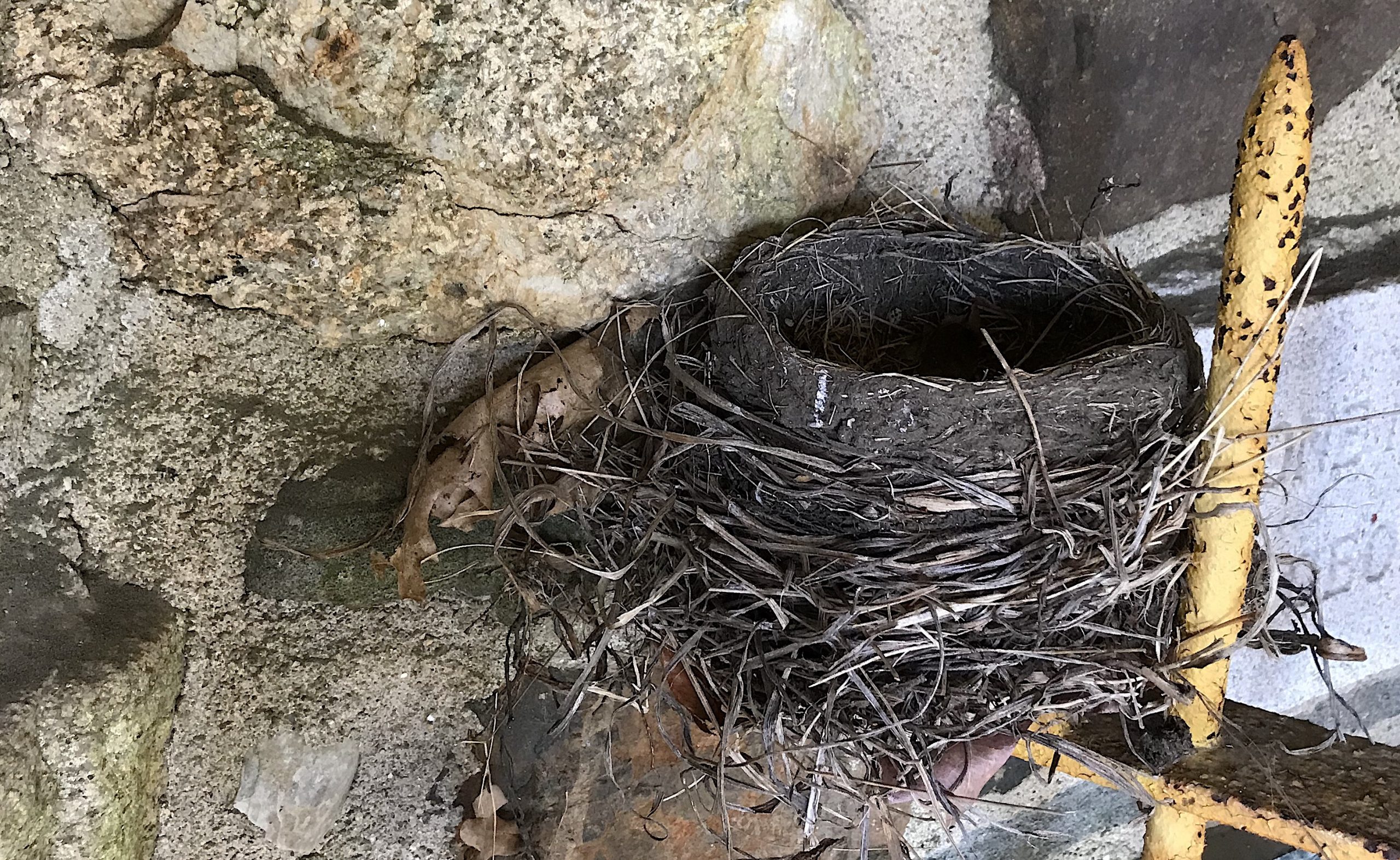
During this broad transition, the trees and brush surrounding the neglected pavilion grew rapidly, casting it into shadow. The exterior stones became tarnished and lichen-covered to more closely resemble the adjacent rock slabs. In 1997, staff writer Mark Roy called attention to the pavilion in a story for the UConn Advance, the print predecessor of online UConn Today. When reprinted in 2012, Roy's story rekindled the attention of professor Robert Thorson, who had long been using the site for geology field trips. To broaden awareness, in 2016 he published the location of the pavilion as part of an online "Interactive Geological Tour" that accompanied an article in UConn Magazine titled Rock On that featured UConn's historic stone walls and agricultural origins.
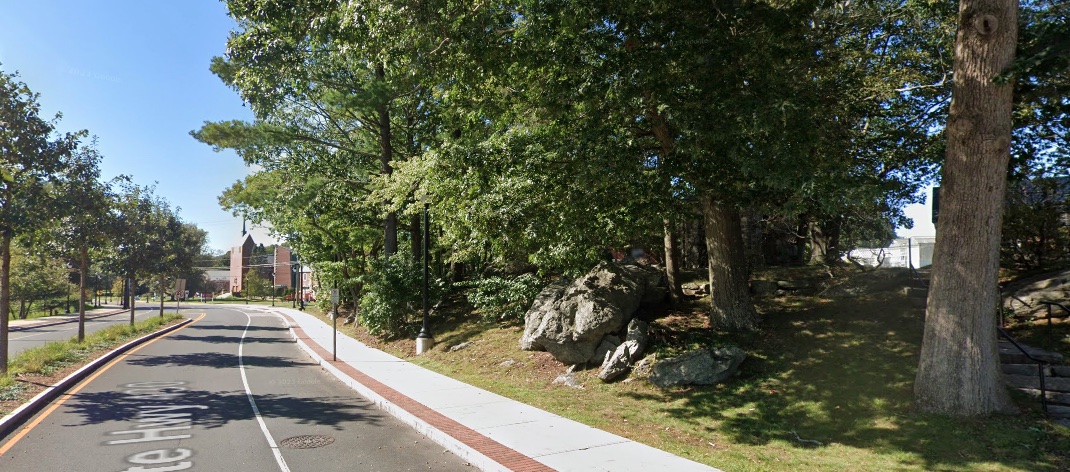
When we initiated this project in 2021, paint was peeling from the pavilion's protective grate. We had to cut and rekey the lock. Birds were nesting at eye-level inside. The stones were begrimed with algae, soot, lichens, pollen, dust, and microbial films. Identifying and photographing the stones required that we scrub them with a wire brush soaked with detergent and water. For some stones, heavy algal coatings required bleach. Learn more by linking to Forgetting the Pavilion.
A Proper Name
When Mark Roy published his 1997 article, he wrote that the building "has been referred to over the years as 'the stone shelter,' 'the stone pavilion,' and – in recent years – 'the little stone house.'" Our project carefully: examined all naming precedents from archival research. We did a word-by-word analysis of the original 1937 newspaper articles. We also scrutinized the names used in UConn's official 1988 nomination of the structure to the National Register of Historic Places as part of its historic district. That nomination used the terms "Outdoor Pavilion" and "Grange Shelter Pavilion." Following this precedent, we adopt the word "Pavilion" for this project because the final noun for National Register nomination is "pavilion," and we adopt the word "Stone" as the simplest, most consistently used, and most descriptive adjective for all previous mentions. Hereafter, we call it the Stone Pavilion Though the word "Grange" would have been known to every student in the 1930s, very few current students with urban, suburban, and international backgrounds know of that organization today, weakening its use as a modern adjective. Learn more about our name choice by linking to the National Register nomination and to our Document-by-Document Chronology.
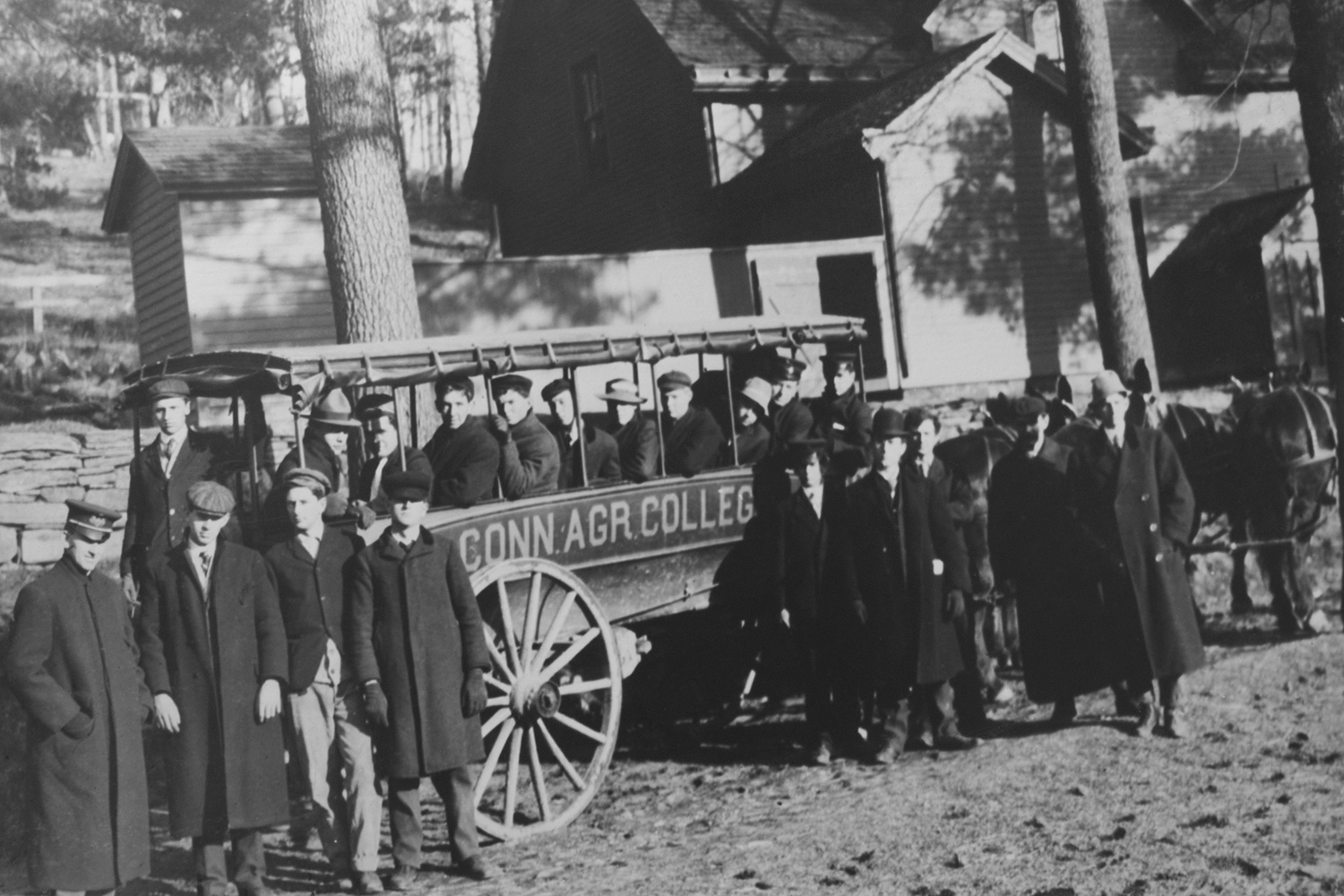
Back to the Future
Agriculture is experiencing a cultural resurgence as our food production system shifts away from intensive industrial techniques to more locally sourced, less polluting, and more sustainable methods. This shift, called regenerative agriculture, coincides with our urgent needs to: sequester more carbon in soils; help mitigate climate change; extend animal rights; and minimize farm pollution. This transition has captured the attention and hopes of the rising generation of college students, the "Youth" to whom the pavilion was dedicated. UConn's stone pavilion can symbolize and energize the future promise of regenerative agriculture.
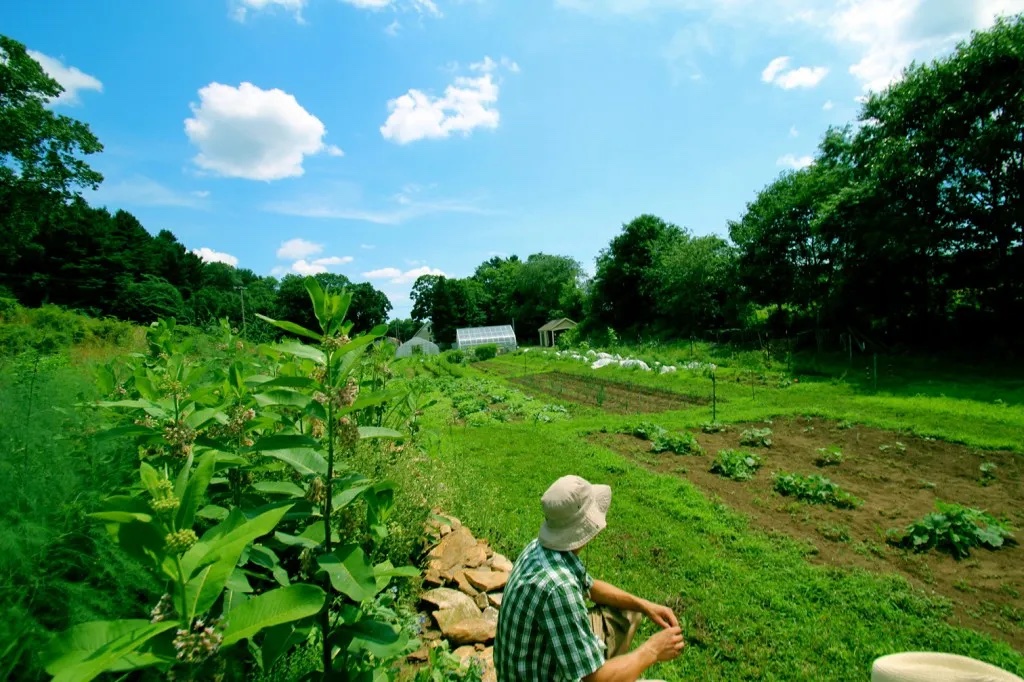
The story of the pavilion can also help UConn students and visitors feel more "grounded" to the earthly roots of our institution in human time, and to the earthly roots our our national landscapes in deep time.
Campus Destination

Fun Destination
Almost every student knows where UConn's Dairy Bar is located and most have been there. Ditto for the bronze statue of Jonathan, the Husky mascot. The stone Pavilion is located on a line between these two famous places for student life. It's conveniently located, always open, free of charge, very user-friendly, and is a physical place you can enter, feel, smell, touch, and catch the crystal vibe. Why not go there, take a selfie, and share it with your friend on social media?
Piece of Home
Based on its 2024 Fact Sheet, UConn students come from 46 of the 50 U.S. States. We believe that most, especially homesick first-year students, would appreciate knowing that a piece of their home is proudly exhibited in the Stone Pavilion. To see it, all they need to do is visit the pavilion, locate the state name on the bronze index plaque, associate that state name with a state number (alphabetical except for Alaska and Hawaii), and then find the stone matching that number. Alternatively, you can use the map below of the exhibit wall to locate your state with its two-letter postal abbreviation.
To learn about your state's stone, just link to Piece of Home where you will find photographs, maps, links, and descriptions.
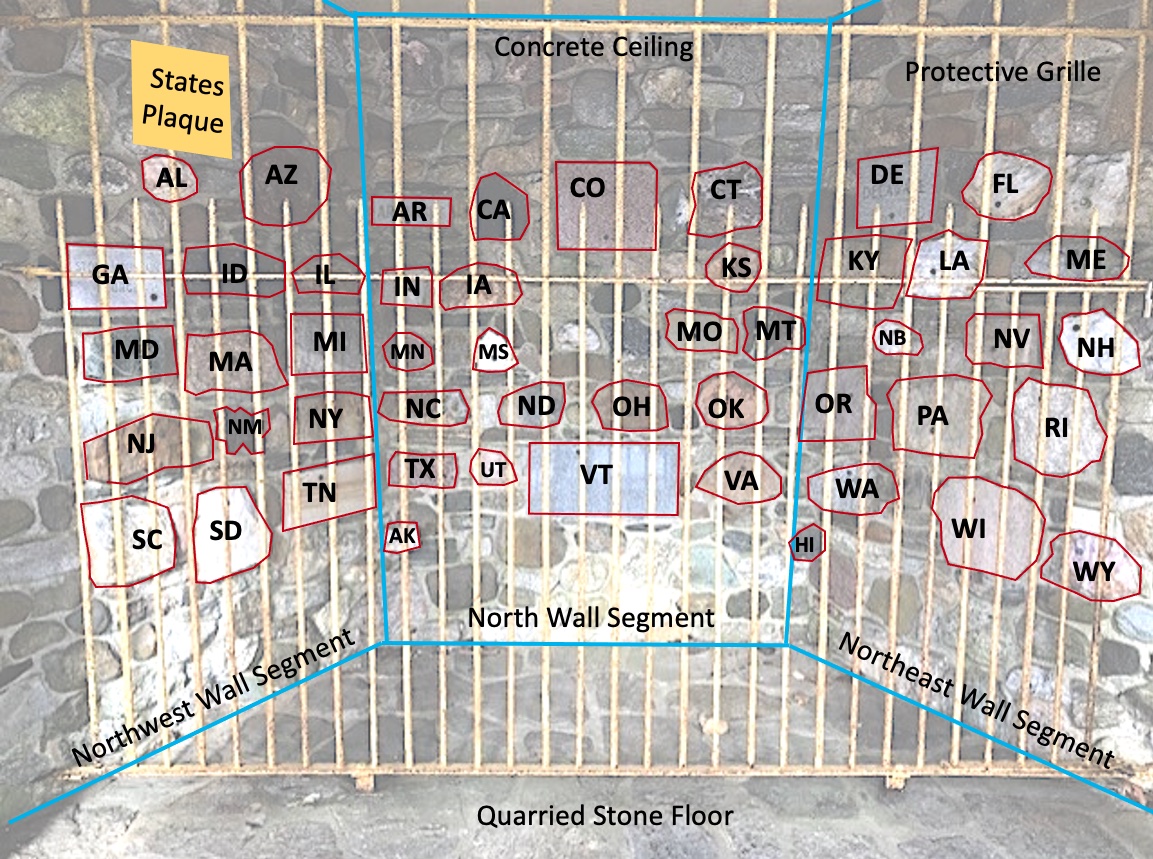
Fun Activities
The 50 specimen stones offers countless opportunities for creating games and puzzles and rhymes based on the state stones. It's easy to imagine crossword puzzles, variations of bingo, scavenger hunts, and sorting games based on rock type or location. If you create one, please let us know and we will likely post it on this site.
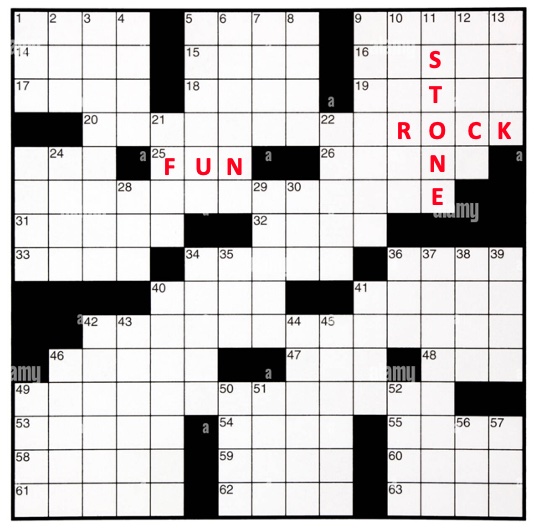
Catching the Stone Vibe
- FEELING HIGH? Did you know that the source for the polished pink slab in the upper left of the photo (below) holds up the Mountain State's (Colorado) highest peak, named after the explorer Zebulon Pike?
- FEELING SPOOKED? The gray stone in lower left comes from our nations's deepest granite quarry in Barre, Vermont. It's likely that more U.S. gravestones are built from this rock than any other.
- FEELING RICH? The dark rock to the right of center and with a turquoise-colored blotch is silver ore from an abandoned mine in Montana.
- FEELING OLD? The shiny wet rock right of center from Kansas is a hundred million times older than you are.
- FEELING STRESSED? The stone from Connecticut in the upper right was literally crushed by tectonic pressure. We're relaxed compared to what it experienced.
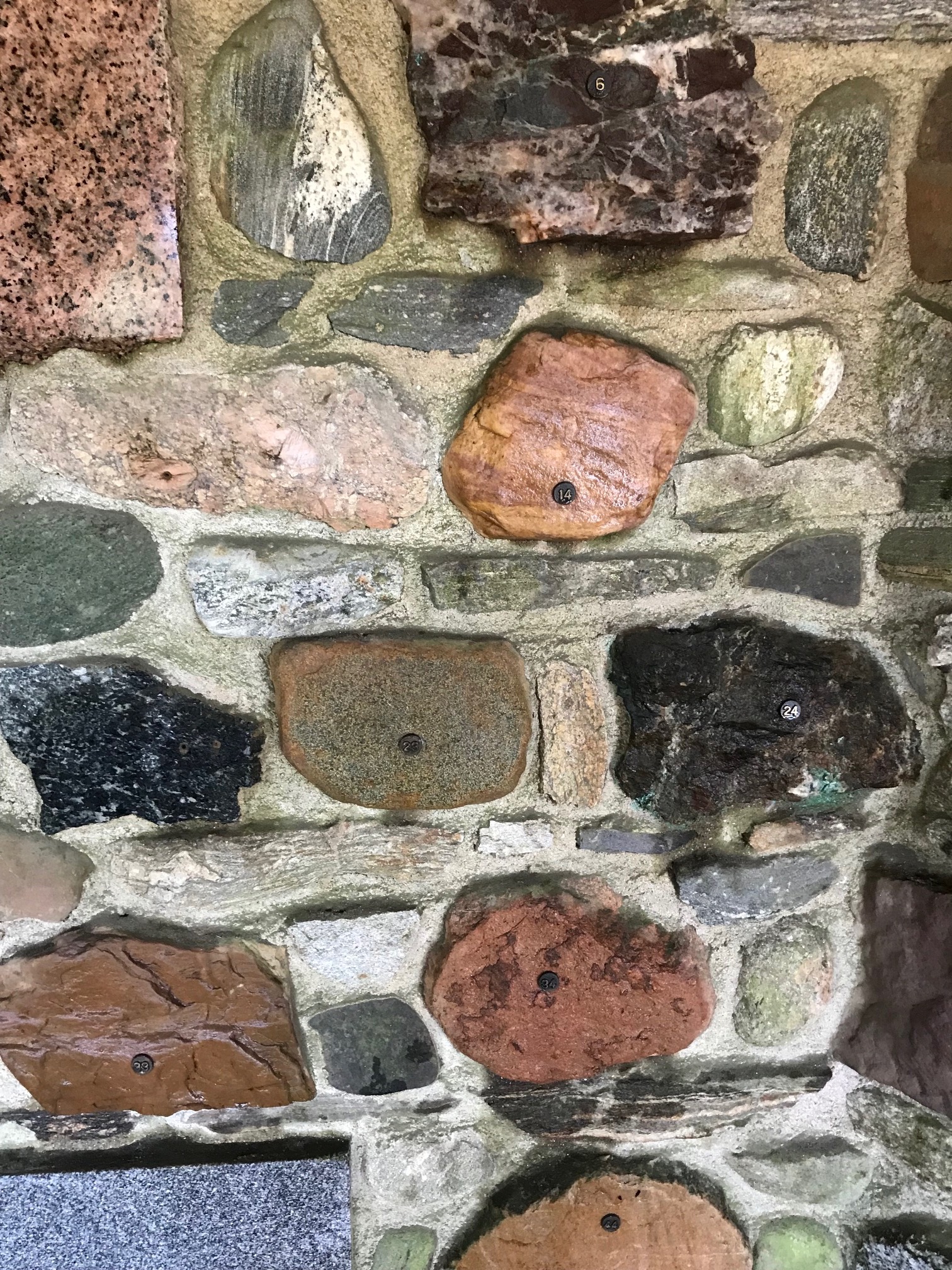
Strength in Diversity
America's strength lies in the diversity of its natural resources, landscapes, and people. This pavilion illustrates that our campus, state, and country are beautiful aggregates of very different things.
Earth Science & Ancient Worlds

Documenting the Collection
Within the interior of the pavilion, high up in the upper left corner is a bronze plaque identifying which state each numbered specimen stone comes from. Beyond this simple association --for example, Alabama 1, Arizona 2, Hawaii 50, etc.-- we know of no other information about the stones except for the anecdotal comments from a 1937 newspaper article that: can't be traced to any source document; was written by an anonymous reporter; and contains multiple errors. To fill this void of information, in 2020 we created the Stone Pavilion Project in 2020 to document each stone and provide as much detail as we could find
For each state specimen stone, we offer four illustrations: a photo of the stone; a closeup of one portion of the stone; an outline map showing the stone's state location; and a thumbnail geological map of state. Associated with these images are descriptions, identifications, interpretations, and links to further resources. The state geological maps for each state are from the U.S. Geological Survey’s collection of Geological Maps from its Mineral Resources Online Spatial Data, an interactive website that allows you to seamlessly explore state, regional, and national geology. Click the menu in the upper left and begin. Link here to learn more about the group of Specimen Stones as a collection.
Our research methods for documenting and interpreting the specimens are described at the link Documentation and Quality Control . The related link Explanation of State Stones describes how we organize and present this information to the viewer. Given many uncertainties, our interpretations must be considered preliminary until further information becomes available. Everything is a work in progress. If you notice an error, are able to identify a likely geological formation, or have something to add, please contact Robert Thorson at your convenience. As with all museum collections, this is a collaborative effort through time and space. Already it involves the staff of most of the state geological surveys.
Exhibit with Five Galleries
Having preliminary, science-based labels, descriptions, and classifications allows the Stone Pavilion to be used as a natural history exhibit organized across five different themes or galleries. The Connecticut State Museum of Natural History is now engaged in the process of designing future exhibits, both at the site and online.

State-By-State
This gallery allows you to click through the state stones in whatever order you prefer. You may with to look at the stone from your state of birth, other states you care about, or states you're curious about. If you're in the pavilion, you can use your cell phone to read about any of the stones. To tour the nation, use the menu above.
One Earth
This gallery integrates the three collections at the site: the local bedrock and its glacially transported slabs; the state collection dominated by fieldstones hauled in from every town, and the national collection of specimen stones. To learn more, link to One Earth.
Ancient Worlds
This gallery shows you how the 50 specimen stones provide examples of: (1) Fossils and Mass Extinctions; (2) Ancient Climates and Environments; (3) Active vulcanism, (4) Mountain Building and Uplift; and (5) Iconic Landscapes. To learn more, link to Ancient Worlds.
Time Machine
This gallery narrates the story of the U.S. landscape by arranging the specimen stones in chronological order. The oldest stone is a fragment of the Canadian Shield torn from Archaean rocks about 2.7 billion years old and dragged southward into North Dakota. The youngest is a bubbly lava flow from New Mexico that's probably only about 5,000 years old. To learn more, link to Time Machine.
Natural Resources
This gallery explains how the stones provide us with mineral, energy, and aesthetic resources. The architectural stones used to create the building constitute a resource that was used elsewhere for fieldstone walls, crushed for roads, or concentrated for other purposes. The specimen stones represent metal ores, nationally significant aquifers, and quarries for objects ranging from carved gravestones to building dimension stone. To learn more, link to Natural Resources.
Geoheritage

Definition
The phrase "cultural heritage" is widely understood, referring to the places, people, stories, and materials of the past that help us understand who we are. "Geoheritage" is the subset of cultural heritage referring to the earthly materials and landscapes that help us understand who we are. Two examples include: Siccar Point on the Scottish coast where the discovery of deep time by James Hutton in the 1780s helped usher in the European Enlightenment; and a thin stratum at Gubbio, Italy where the cosmic cause of dinosaur mass extinction was revealed in the 1980s. These, along with Arizona's Grand Canyon, constitute three of the world's 100 Geoheritage Sites recently compiled by the International Union of Geological Sciences.
More locally, the 1937 construction of the Stone Pavilion with local, state and national stones symbolized the dream come true for an agricultural school to become a state college and then truly national university whose tap root is agrarian-environmental.
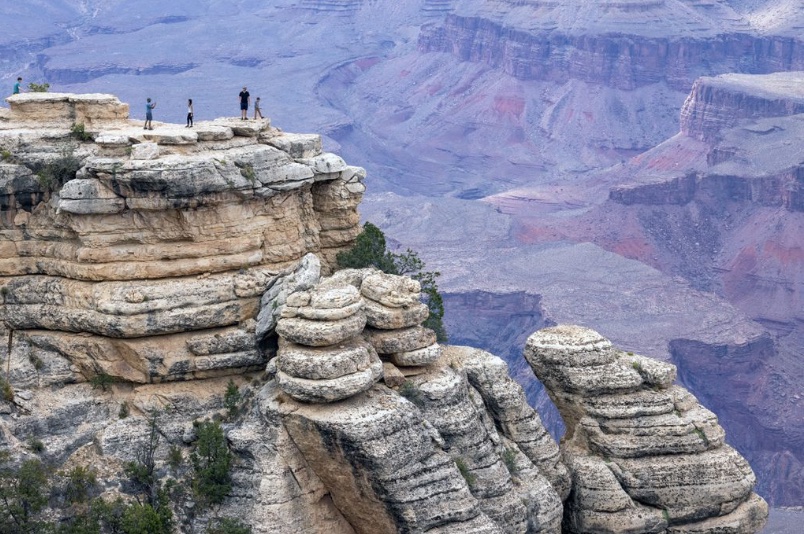
The Geological Society of America defines Geoheritage, as a "generic but descriptive term applied to sites or areas of geological features with significant scientific, educational, cultural, and/or aesthetic value." The Stone Pavilion qualifies. One professor Thorson's recent students of Peruvian descent dubbed it a mini-Machu Picchu. Both are stone structures perched on bedrock ridges that are accessed by quarried walkways. Link to the society's Position Paper #20.
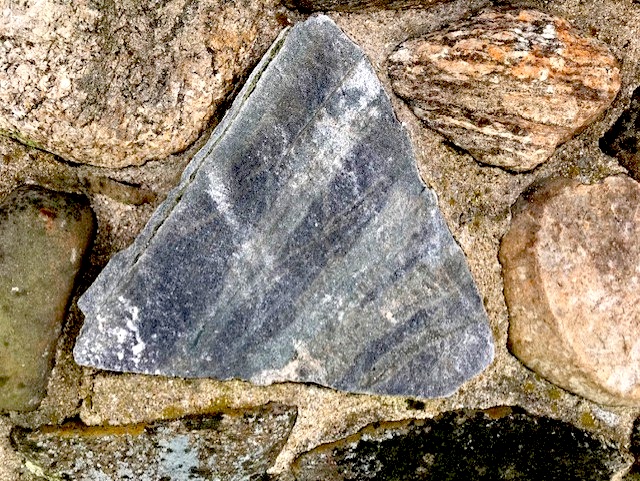
Geodiversity
The term biodiversity is widely understood. Its landscape counterpart is geodiversity, which gives rise to biodiversity, which makes human diversity possible. One good example of geodiversity is your cell phone or the electronic communication device you're using to visit this website. Within that device are dozens of minerals that were mined and processed to make modern life possible. Within the Stone Pavilion are examples of material resources that were used to build the modern world, from quarried dimension stone to ore minerals. .
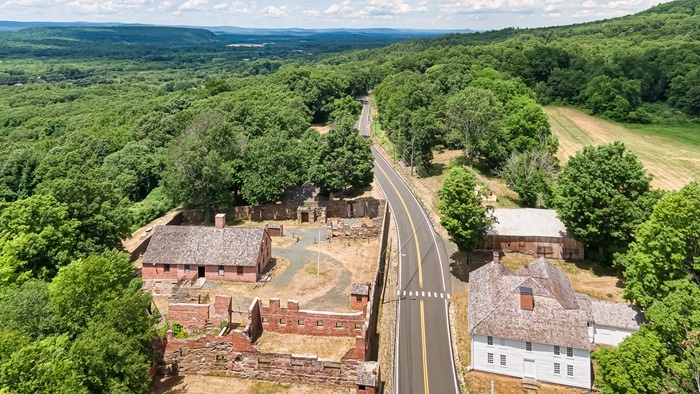
State and National Registers
We are already exploring nomination of the Stone Pavilion to state and national registers of significant places.
To learn more about the geoheritage of the pavilion, link to Geoheritage.
Earth Science Education

Construction of this Education portion of the website has only just begun. We expect that it will slowly incorporate a variety of in-person and online educational materials for Earth Science at all levels. We envision a variety of curriculum modules, lesson plans, videos, field trips, and assignments based on the national collection of 50 specimen stones, available online. Already we have some curriculum materials on Chemical Bonds created by Earth Science graduate Mary Ferguson. Scroll down.
College and University
The initial impetus for this project in 2016 was to enhance an in-person field trip stop for students in UConn's introductory Earth Science courses: ERTH 1050-1051-1052 - Earth's Dynamic Environment. These field trip visits continue today, with for nearly a thousand students visiting them per year. Future linkages between the pavilion and the syllabi for various ERTH courses provide opportunities for active learning and local engagement beyond the classroom experiences. Online materials for the pavilion also enrich our non-Storrs offerings at the regional campuses and through the Early College Experience (ECE) program.
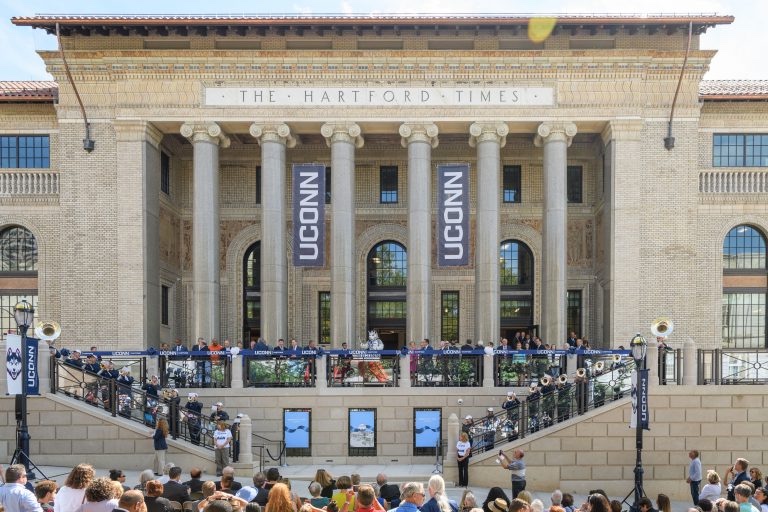
UConn's new Common Curriculum requires that all students enroll in courses from six Topics of Inquiry. The Stone Pavilion provides opportunities to engage with all six. Examples of such opportunities are available at the link Learn More - Education.
K-12 and Preschool

In Connecticut, Earth Science is offered in late Middle School and early High School, most often as components of more general science courses. The current playbook for school curricula is based on The National Research Council's Next Generation Science Standards, which require significant geological content. The specimen stones of the pavilion link to content in all 12 Core Standards, with learning outcomes specified for grades 2, 5, 8, and 12.
The pavilion is within easy reach of dozens of elementary and middle schools in eastern Connecticut. The local (regional) public high school, E.O. Smith, is within easy walking distance. No permission is needed to visit.
Owing to its novelty and cuteness factor, the Stone Pavilion provides a wonderful opportunity for field trips and activities for kids of all ages, either within school curricula or with parent activities.
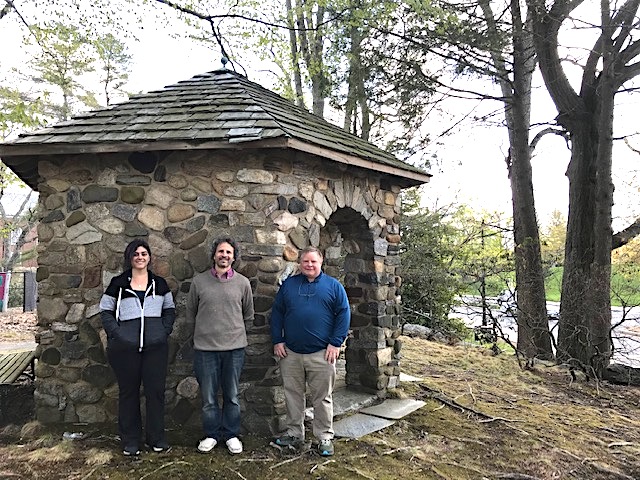
Construction of this Education portion of the website has only just begun. Our first curriculum project is by Mary Ferguson, an undergraduate geoscience major with a special interest in education and communication. Working with Meghan Kinkaid, one of our UConn ECE (Early College Experience) faculty, Mary created three PDF documents to help make the pavilion accessible to lessons and field trips. Her documents are:
- SLIDES - Chemical Bonds and the Stone Pavilion
- OUTLINE & SCIENCE STANDARDS - Chemical Bonds and the Stone Pavilion
- STUDENT WORKSHEET - Chemical Bonds and the Stone Pavilion
Her documents provide a great start for a teacher trying to tie an important learning objective to a fun local experience
Over time , we will slowly incorporate a variety of in-person and online educational materials for Earth Science at all levels. We envision a variety of curriculum modules, lesson plans, videos, field trips, and assignments based on the national collection of 50 specimen stones, available online.
All Ages
Ad hoc tours of the Stone Pavilion with groups of interested adults have proven very successful. Over time, we will develop materials to facilitate these activities, including a print brochure.
UConn, Mansfield, and surrounding towns have robust adult education programs that are benefiting from having a walkable place linked to learning opportunities.
To learn more about educational plans for the stone pavilion, link to Learn More Education.